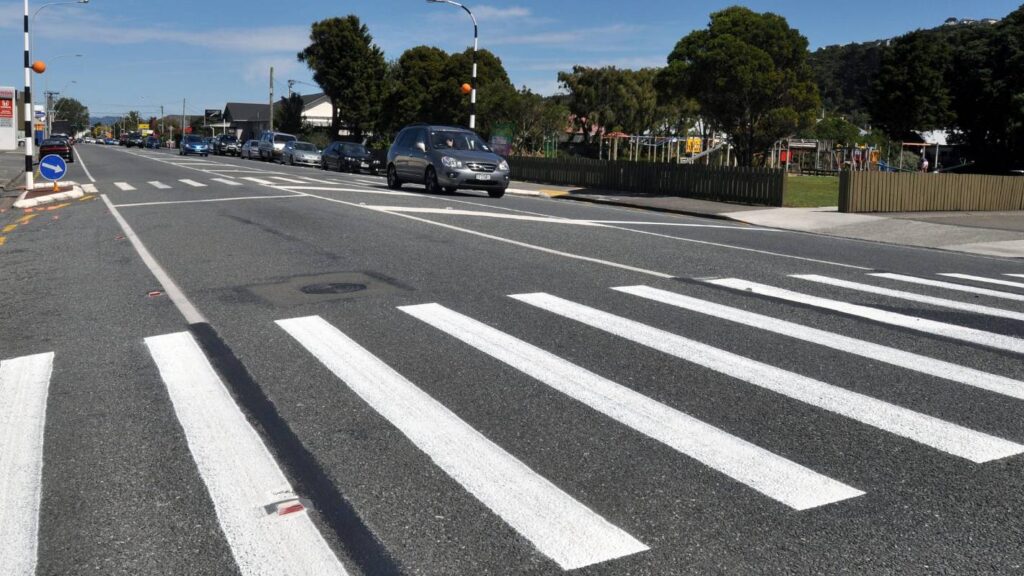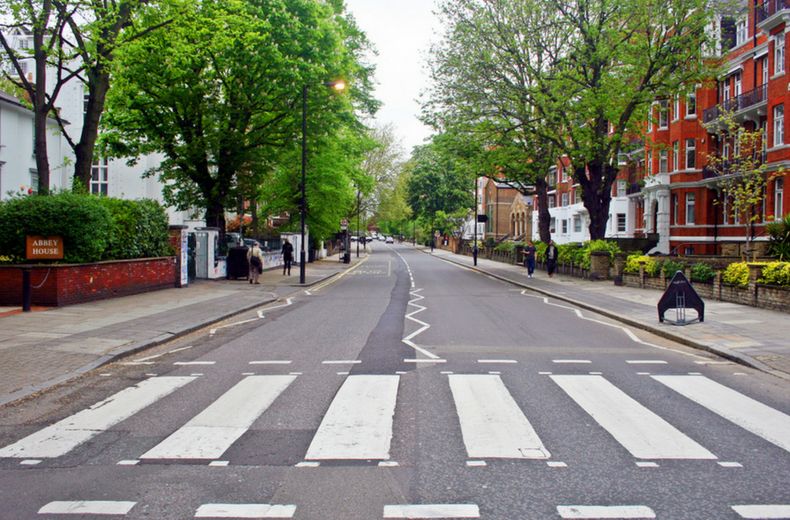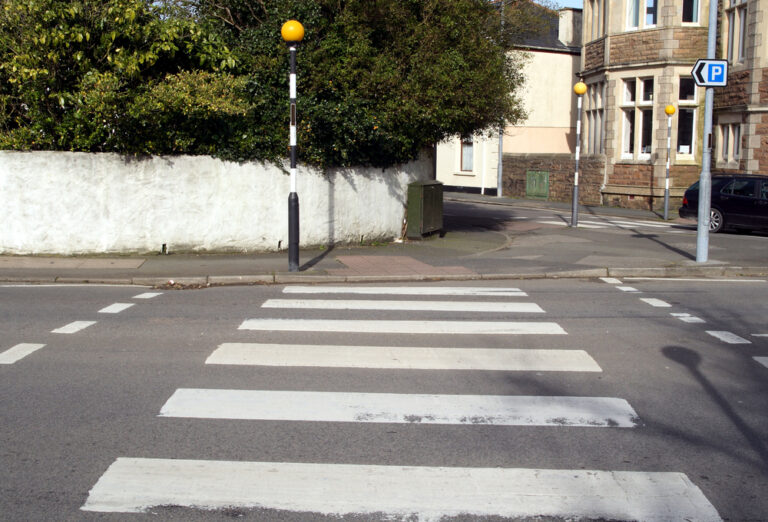Waving pedestrians to go to a crosswalk is not a good idea for some important reasons. It can make things confusing for both drivers and walkers, and this messes up the rules at crosswalks. Crosswalks are meant for walkers to go first, and when you wave them, it can cause problems and maybe even accidents. It can also slow down the traffic and lead to traffic jams.
Sometimes, you can’t see the whole path of the walker, and that’s not safe. Walkers might also get it wrong and think they can cross when it’s not safe. So, it’s better to let walkers use crosswalks the normal way and wait for them to cross when it’s safe.
What’s the purpose of pedestrian crossings?
Pedestrian crossings are designated areas on roadways meant to provide pedestrians with a safe and protected space to cross streets.
Definition and Purpose of Pedestrian Crossings
Pedestrian crossings, also known as crosswalks, are designated areas on the road, usually marked with painted lines or zebra stripes, where pedestrians have the legal right to cross the road.
Furthermore, the primary purpose of pedestrian crossings is to ensure the safety of pedestrians by providing them with a designated and protected space to cross roadways. These crossings are established at specific locations to allow pedestrians to traverse busy streets more safely.
Types of Pedestrian Crossings:
- Marked Crosswalks: These are the most common type, with clear painted lines or zebra stripes indicating where pedestrians should cross.
- Unmarked Crosswalks: These exist at intersections and are not visibly marked, but pedestrians still have the right of way.
- Signalized Crosswalks: Some pedestrian crossings have traffic signals that control both pedestrian and vehicular traffic, making it safer for pedestrians to cross.
The Importance of Established Rules and Right of Way

The rules and right of way associated with pedestrian crossings are vital for the safety of both pedestrians and drivers. They establish a predictable and organized system for sharing the road.
Traffic laws and regulations set forth rules for how pedestrians and drivers should behave at pedestrian crossings. This legal framework ensures that all road users are aware of their responsibilities.
Pedestrian crossings are designed to give pedestrians the right of way. This means that when a pedestrian is using a crosswalk, vehicles must come to a stop to allow the pedestrian to cross safely.
Having established rules and a clear right of way reduces confusion for all road users. Both drivers and pedestrians can anticipate how to behave, making traffic flow more smoothly.
What are the dangers of waving pedestrians?
Waving pedestrians through traffic, or allowing them to cross the road, can be a kind and considerate gesture, but it should be done with caution and in accordance with traffic laws.
Confusion for Drivers and Pedestrians
When a driver waves a pedestrian across the road, it can create conflicting signals. Other drivers approaching the crossing may not understand the pedestrian’s intentions, leading to confusion.
Waving a pedestrian across can encourage them to cross when they may not have initially intended to, causing pedestrians to act unpredictably and potentially putting themselves at risk.
This confusion can result in miscommunication between drivers, pedestrians, and even other road users, increasing the likelihood of accidents.
Disruption of the Established Right of Way
Pedestrian crossings are designed to give pedestrians the right of way, ensuring their safety. Waving pedestrians across disrupts this established priority and can lead to misunderstandings about who has the right to proceed.
Inconsistent behavior, such as a driver stopping for a pedestrian when other vehicles are approaching, can create a lack of uniformity and order on the road, potentially causing accidents or conflicts.
Impact on Traffic Flow and Potential Traffic Congestion
Stopping or slowing down to allow a pedestrian to cross when it may not be necessary can disrupt the flow of traffic, leading to congestion.
Other drivers who are not aware of the waved pedestrian may also stop abruptly, creating a chain reaction of braking that affects the entire traffic flow.
Limited Visibility and the Potential for Accidents
In some situations, drivers may not have a clear view of the entire pedestrian crossing, particularly in multi-lane roads or when there are obstructions. Waving a pedestrian without full visibility can be dangerous, as other vehicles might not see the pedestrian.
Limited visibility may lead to the potential for accidents if other vehicles are approaching from obscured angles and the pedestrian assumes it’s safe to cross.
Misinterpretation by Pedestrians
Pedestrians waved across by a driver may assume it’s safe to cross without checking for other approaching vehicles, leading to a false sense of safety.
In addition, this misinterpretation can put pedestrians at increased risk, especially if they don’t realize that other drivers may not have seen them.
How can drivers make pedestrian crossings safer?

By following these guidelines and being a responsible and attentive driver, you can significantly contribute to making pedestrian crossings safer.
The Responsibility of Drivers to Yield to Pedestrians at Crosswalks
Legal Obligation: It’s essential to recognize that drivers have a legal obligation to yield the right of way to pedestrians at crosswalks. This responsibility is enshrined in traffic laws and regulations in most jurisdictions.
Pedestrian Priority: Crosswalks are specifically designed to provide pedestrians with a safe and designated space to cross roadways. When pedestrians are in a crosswalk, drivers must come to a complete stop and allow them to cross safely.
Enhancing Safety: Adhering to these rules and yielding to pedestrians at crosswalks is not just a matter of compliance but a crucial step in enhancing road safety. It helps reduce the risk of accidents and ensures that pedestrians can safely navigate busy intersections.
The Importance of Attentiveness and Patience
Attentiveness: When approaching a pedestrian crossing, drivers must remain attentive to their surroundings. This includes scanning for pedestrians who may be waiting to cross or those already in the crosswalk.
Reducing Distractions: It’s vital for drivers to minimize distractions such as mobile devices, loud music, or anything else that could divert their attention from the road. Being attentive ensures that pedestrians are not overlooked.
Patience: Patience is a key virtue when driving near pedestrian crossings. It’s essential to wait patiently while pedestrians cross the road, even if it briefly inconveniences you as a driver. This patience contributes to a safer and more respectful road environment.
Pedestrian Behavior: Pedestrians may not always follow the rules perfectly, so drivers must be patient and cautious. Sometimes, pedestrians may step into the road without using a crosswalk, and drivers need to anticipate such behavior.
FAQ’s
What is wave people?
Waving at people is a common non-verbal gesture used to greet, get someone’s attention, or say goodbye.
Is it nice to wave at people?
Waving at people is generally considered polite and friendly, often used as a gesture of acknowledgment or greeting.
Is it good to wave at someone?
Waving at someone can be a good way to establish a connection, show friendliness, or express a simple greeting, making it a positive social gesture.
Why do people wave at people?
People wave at others to communicate a friendly hello, get someone’s attention, or express goodwill without the need for words.
Why do people wave at you?
People may wave at you to acknowledge your presence, greet you, or initiate a non-verbal conversation.
Do you wave to someone or wave at someone?
Both “wave to someone” and “wave at someone” are commonly used, and the choice can depend on the specific context or personal preference.
Final Words
It’s best for drivers to follow the rules and let pedestrians use crosswalks safely. This helps everyone on the road stay safe. Waving pedestrians across the road can be confusing and risky, so it’s better to follow the law and let pedestrians have the right of way.
Furthermore, when driving near crosswalks, it’s important to pay attention and be patient, even if it means waiting a little. This way, we can make the roads safer for everyone, and that’s what’s most important. So, remember, be a responsible driver and help keep pedestrians safe.

